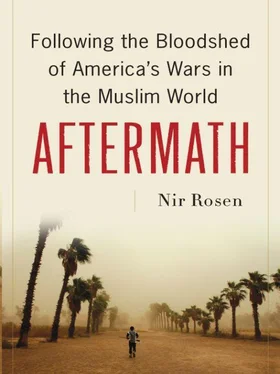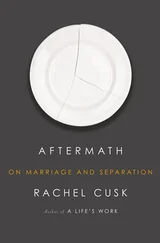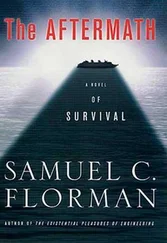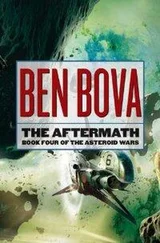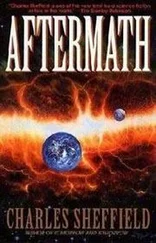In October 2006 Sheikh Khalid said something to Gentile that caught his attention at the time and that he has never forgotten. “For some reason I asked him about insurgent attacks in the area and about Al Qaeda,” Gentile said. “He then pulled me off to the side a bit, out of earshot range of his mosque guards, and my troops knew what to do by placing themselves between me and the imam and his guards. He then very breezily dismissed Al Qaeda as an important factor in the future of the area and the country. I thought that odd at the time, since AQI seemed to be behind so much of the violence. But it later occurred to me that what he was essentially saying and reflecting were the early and fundamental changes that were occurring in Anbar with the Awakening and his sense that it would very possibly be soon spreading to Baghdad.”
As it turned out, Sheikh Khalid was a key player in the eventual link of U.S. forces in Amriya with the Sons of Iraq. Gentile’s successor, Lieut. Col. Dale Kuehl, commanded the First Battalion, Fifth Cavalry, in Amriya from November 2006 until January 2008. “Amriya was pretty violent when we got there, as was Khadra just to the north,” he told me. “Soon after we took over the entire Mansour Security District, which includes all of Mansour area except Ghazaliya, which 2-12 Cav was responsible for. Most of the violence seemed to be directed at the Iraqi Security Forces, especially the Iraqi police. They could not come into Amriya without getting attacked. A lot of violence was also directed at the populace, especially against the Shiites. Kidnapping was also common. The going rate for ransom was between thirty-five thousand and fifty thousand dollars. Civil society had completely broken down. I think many people responded with random and vengeful violence. However, I also believe that JAM special groups working with elements within the Iraqi government were trying to push the Sunnis out of Baghdad. I also think that AQI and other extremist groups were trying to establish a Sunni enclave to stop the JAM encroachment.”
It was Kuehl’s first deployment in Iraq, but he was well schooled in counterinsurgency. He had written his master’s thesis on civilians on the battlefield in the Korean War and had studied Mao Zedong’s theories on guerrilla warfare. Just before taking command of the 1-5 Cav, he read Learning to Eat Soup With a Knife: Counterinsurgency Lessons From Malaya and Vietnam by Lieut. Col. John Nagl. Nagl had been his roommate at West Point and would go on to play a crucial role in writing the U.S. Army’s new manual on counterinsurgency. Nagl’s book emphasized the importance of the military becoming a learning organization, adapting to the needs of a different type of war. “Of course, prior to deployment we had a number of leader teaches and seminars to discuss the fight we were going into,” Kuehl said. “This study culminated with the COIN Academy in Taji, which I thought was an excellent course.”
The first large IED to hit one of Kuehl’s patrols occurred one February morning in Khadra. The IED was planted at an intersection and tore off the driver’s door. The driver lost both legs. After securing the site Kuehl took his patrol to a nearby street and started questioning locals. He talked to one man who asked him if the patrol was a combined one with the Iraqi National Police. “I told him it was not, it was a U.S.-only patrol. His response was a bit startling. He said, ‘That is not supposed to happen.’ I pressed him to explain. He just repeated that our patrols were not supposed to get attacked. He also asked why the INP observation post on a nearby bridge did not see the IED go in. It should have been able to. He was a bit upset himself, showing a piece of shrapnel that landed in his yard where his daughter was playing.”
Kuehl left him to see for himself, passing through the same intersection that had just been bombed. Just as he was looking up to see the window from the observation post that overlooked the intersection, his vehicle was hit by another IED. “It flattened a couple tires and took some chunks out of our windows, but everyone was okay. From this incident I realized that there were definitely different insurgent groups working in the area. The locals knew what was going on with at least one of these groups, and it sounded like they were not targeting U.S. troops. But this other group definitely was.” He did not know it then, but this was the start of Al Qaeda flexing its muscles in the area. They had been pushed out of other areas, like Haifa Street and Anbar, and were trying to take over Mansour. Compounding this was the influx of displaced people from Hurriya to the north and Amil and Jihad from the south. “Locals kept complaining that the violence was coming from people outside the area. We kept dismissing this, but to a large extent I think they were correct,” Kuehl said.
At the COIN Academy in October 2006, General Casey informed Kuehl and his team that the goal was to hand security in Baghdad over to the ISF by the summer of 2007 so that the Americans could depart as soon as possible. This was based on the not-unreasonable notion, advocated even by Centcom commander General Abizaid, that the American presence in Iraq was the cause of most of the violence in Iraq. But once in Baghdad, Kuehl was convinced that Casey’s goal was unrealistic because of the sectarian violence and the sectarian nature of the government and ISF. He began to focus on protecting the population, even before General Petraeus arrived and formalized the new approach.
Previous attempts had been made to rid Amriya of Al Qaeda, such as Operation Together Forward in August 2006 and Operation Arrowhead Strike 9 in April 2007. Yet in May 2007 Amriya was even more violent. According to Kuehl, previous operations had failed because of poor intelligence, which led to imprecise targeting. Once an area was cleared of Al Qaeda there were not enough troops to hold it, and Sunnis did not trust the ISF. During Operation Arrowhead Strike 9 Al Qaeda men fled or blended into the population, avoiding the operations. As a result of the Americans’ inability to provide security, they could not move on to rebuild the area. When Kuehl and his men changed their focus from handing over authority to the ISF and instead tried to protect the population, he said they began to see gains in security.
In January 2007 the Mahdi Army seized the Hurriya neighborhood and moved on to the Amil and Jihad districts. “We couldn’t do anything and the Iraqi Army chose not to do anything,” Kuehl later wrote. “Instead, we watched helplessly as thousands of Sunnis were forced out of their homes getting pushed into Mansour.” Sunni militias were forced to collaborate with Al Qaeda to protect their areas from the Mahdi army, but the Americans offered an alternative that, in the short term at least, proved more tempting. Kuehl hypothesized that Al Qaeda controlled Amriya but only as an active minority that intimidated the neutral majority. In February 2007 he began to have clandestine meetings with clerics in Amriya late at night. Sheikh Walid was already organizing against Al Qaeda, but he was not ready to act. That month Kuehl also met with community leaders and assured them of his commitment to defeating Al Qaeda and protecting Amriya from Shiite militias.
Kuehl inherited Gentile’s wall around Amriya, but it was too short and had a lot of holes in it. “We fought to keep it closed, and AQI fought to keep it open,” he said. “Our first casualty was a sergeant killed while trying to put one of these barriers back in place.” Kuehl spent a couple of days in personal reconnaissance figuring out how to get from Abu Ghraib to central Baghdad without running into a checkpoint. It was all too easy, he found. One evening he traced out this route to his boss, Colonel Burton. From there the brigade developed a plan to wall off a good portion of northwest Baghdad, starting with Route Sword, south of Ghazaliya. Then they built blast walls along the airport road. By June Amriya was closed up. “The final point was establishing the entry control points into Amriya,” he said. “I knew they would be targets, so I wanted to make it look formidable, like the Green Zone.”
Читать дальше
